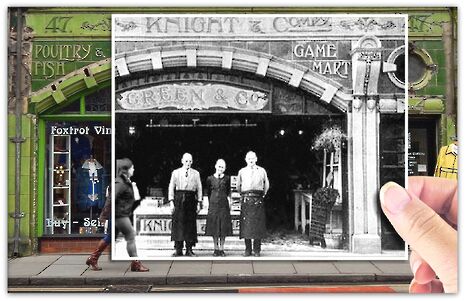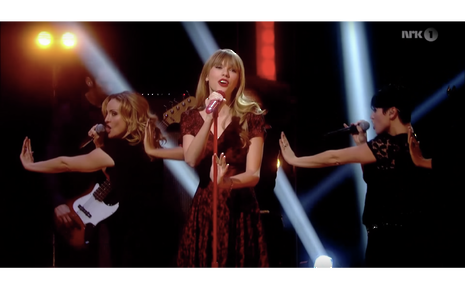The virtues of vintage
Originality, uniqueness and visible underwear – Alice Cattley tells us what makes vintage clothing so attractive

It’s no secret that we are in the midst of a vintage revival. While the movement may have started as something of a life jacket for those who would otherwise drown in the mainstream, vintage styles have been making a monumental comeback and are now pretty much impossible to avoid. The ubiquitous slip dress, for example, is not just a nod towards nineties grunge; the act of wearing underwear as outerwear is arguably the nec plus ultra of a process which saw the slip replace more restrictive shapewear as far back as the First World War. Add to this our rediscovered obsession with bomber jackets, chokers and embroidery and it’s apparent that the fashion world, though forward-facing, has one eye firmly over its (cold) shoulder. The title of Christopher Bailey’s AW16 menswear collection for Burberry, shadowed as it was by the death of David Bowie, encapsulates this idea more succinctly: “Something Old, Something New, Something Borrowed, Something Blue.” (That would be “blue, blue, electric blue” from Bowie's 1977 track, ‘Sound and Vision,’ presumably).
But old styles are always being recycled into new ones, as my mum likes to remind me every time I ask her why she’s still got a fuchsia devore maxi skirt in her wardrobe. Buying into a trend is obviously very different from buying actual vintage clothing; although the proliferation of online shops means that doing both has never been easier, there’s a refreshing unpredictability to vintage shopping which makes the experience as enjoyable as the end result. However you choose to buy vintage – from a website, specialist shop, or simply by taking your luck trawling through the racks in Oxfam – the process itself is an open book. You can’t predict what you’ll find, but you can predict that there’s absolutely no danger of bumping into somebody else in the same thing if you wear it to a party.
It’s unsurprising, then, that vintage clothes are the armour of choice for celebrities looking to avoid the gladiatorial pit of the pointless ‘Who Wore It Better?’ page. When performing on the Norwegian-Swedish talk show Skavlan in 2012, for example, Taylor Swift wore an elegant 1950’s red and black lace dress from Rococo Vintage. Chloë Sevigny, who is the campaign girl for Jimmy Choo’s SS16 collection, may be the yin to Swift’s yang when it comes to fashion (I’m hallucinating nineties yin and yang charm chokers), but she too is a self-professed “vintage freak”. With a wardrobe as edgy and eclectic as the films that heightened her fame, it’s not hard to see why she was said to “stand out in a sea of often clichéd-looking actresses” by Marc Jacobs in 2001. While vintage clothes obviously aren’t the only way to stand out, wearing one-off items can make it easier to find your own style in a culture of #goals where we seem to spend an overwhelming amount of our time trying to look like someone else.
Of course, the popularity of vintage clothing is easy to exploit. From my experiences of buying on eBay and Etsy, it seems that some sellers believe that listing a product as ‘vintage’ justifies the presence of any defects it may have. In our post-polyester age of quantity over quality, older should mean better, not worse, condition. Clothes were usually made to last longer, often featuring generous seam allowances so that they could be let out if their owners outgrew them. This is great, as it means you can generally buy vintage clothing you love even if it’s initially the wrong size; it should be easily alterable as long as it’s been well looked after.

The fact that vintage clothes have indeed been somebody else’s responsibility to look after (or not look after, as the case may be) before you’ve been able to get your hands on them is understandably a divisive factor. Some people prefer not to wear things which have already been worn, washed and worked in a thousand times by somebody they’ll never meet. To an extent, I can sympathise with this; I would definitely draw the line at a vintage bodysuit, for example, or anything else that’s likely to have come too close for comfort to a stranger’s crotch. But there’s undeniably something a little enchanting about living your life in items older than you are, and while speculating about their provenance may be fanciful, it’s also part of what makes wearing them so rewarding.
To return again to the slip dress (there really is no getting away from them): if the spirit of vintage could be epitomised by a single outfit, a strong contender would surely be the slip worn by Kate Moss to Elite’s 1993 Look of the Year party. Innovative, individual and memorable, it defies such an accolade only in that its completely transparent material left no room for what vintage styling so often relies upon: imagination.
 News / Fitz students face ‘massive invasion of privacy’ over messy rooms23 April 2024
News / Fitz students face ‘massive invasion of privacy’ over messy rooms23 April 2024 News / Cambridge University disables comments following Passover post backlash 24 April 2024
News / Cambridge University disables comments following Passover post backlash 24 April 2024 Comment / Gown vs town? Local investment plans must remember Cambridge is not just a university24 April 2024
Comment / Gown vs town? Local investment plans must remember Cambridge is not just a university24 April 2024 Interviews / Gender Agenda on building feminist solidarity in Cambridge24 April 2024
Interviews / Gender Agenda on building feminist solidarity in Cambridge24 April 2024 Comment / Does Lucy Cavendish need a billionaire bailout?22 April 2024
Comment / Does Lucy Cavendish need a billionaire bailout?22 April 2024





